It’s been 19 years since I graduated with a degree in nutrition, and a lot has changed. The flow of new research, new findings and, consequently, new diet recommendations can be so fast and furious it feels like a high pressure spray coming at you; it’s hard to keep up. But the topic still fascinates me nearly two decades later and even now I feel a thrill when I learn about some new connection between nutrition and health, mostly because it reinforces the same principle I internalized as an undergrad: food choices matter.
Along with 700 physicians, nurses, dietitians and other health professionals, I recently had the opportunity to attend Dr. Andrew Weil’s Nutrition and Health Conference in Seattle. For three days I reveled in the latest and greatest advancements in nutrition science. It was stimulating and overwhelming, with quite a few light bulbs going off in my brain. I feel so lucky that I was able to be present for such a significant “meeting of the minds” and thought I’d share the wealth. I want you to know the latest and greatest, too, so hopefully I’ve succeeded in narrowing down the mass of information to five key take-away messages (a bit of a challenge considering I attended 17 different sessions and I’m not one for brevity…).
For your viewing pleasure, I’m including pictures of the spectacular food we were served as attendees. It’s honestly the first time I’ve ever been to a conference where the menu matched the nutrition science being presented. Bravo.
1. Processed foods are the worst. Not earth-shattering, I know, but this message just keeps building steam; it definitely isn’t going away anytime soon. Whether you’re committed to one of the two most health-promoting diets on the planet (Japanese and Mediterranean), you’re motivated by Mark Bittman’s Vegan Before 6 Plan, or even intrigued by Dr. Weil’s Anti-Inflammatory Food Pyramid, there’s one thing they all have in common: less reliance on processed food and a focus on fresh. While processing and refining methods vary, if you buy a processed version of a food that you could make from scratch, you risk getting too much salt, sugar and other undesirable substances and will likely be missing out on the good guys like fiber, phytochemicals, and whole grains. When taken all together, those qualities don’t paint a very positive nutritional picture.
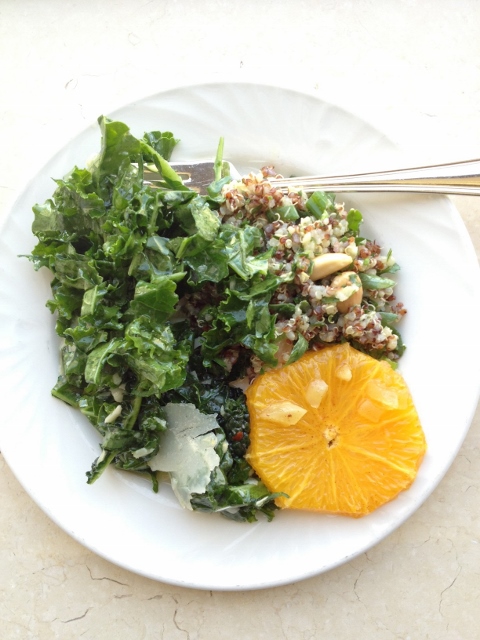
2. Responses may vary. This was definitely a theme running through the whole conference: we are all unique and we may all respond differently to the same nutrients. The science suggests that we cannot expect every human being to experience the same results when following diets of the same carbohydrate, fat or protein composition, when consuming different amounts and types of phytochemicals from food, or when taking supplements to boost nutrient levels. It all seems to stem from the idea that food choice can affect gene expression and that it’s a highly individualized process. In essence, one size does not fit all when it comes to diet recommendations. The solution? Personalized nutrition based on genetic testing…though it’s a few years off.
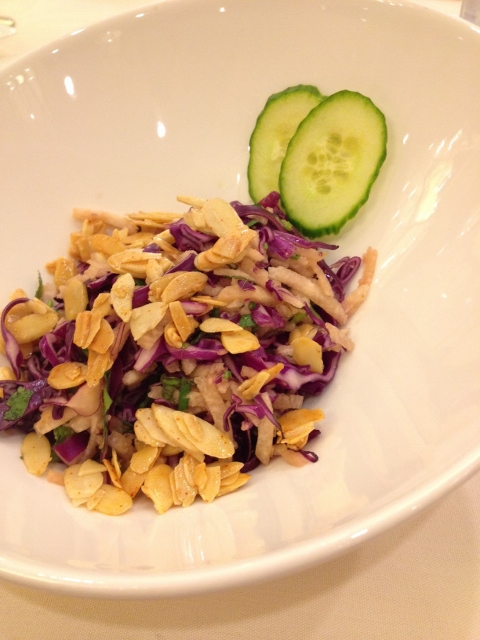
3. Contents may vary. Are you ready for this little tidbit? The nutrient content, especially for phytonutrients, varies widely from one piece of produce to the next. In retrospect, this one isn’t too shocking when you consider that growing, storage, and transport conditions can play a role, but it sure got people talking at the conference. Wild and heirloom varieties seem to have a nutritional advantage. Wild bananas have 400 times as much beta carotene as our conventional or modern bananas, some varieties of tomatoes have more lycopene than others, sweet onions have 1/10th the phytonutrient content as strong-flavored onions, and scallions/green onions are the best onions of all because they most closely resemble wild varieties. Also, they dropped this bomb: the nutritional value of some vegetables increases with freezing! What?! (I’m so excited about these revelations that I’ve pre-ordered the speaker’s book: Eating on the Wild Side by Jo Robinson.)
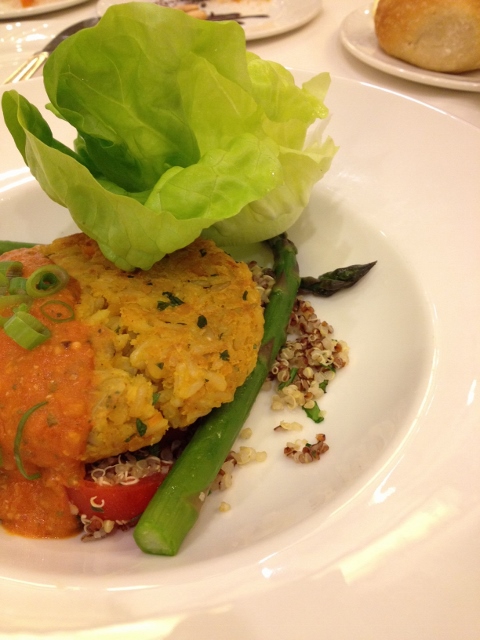
4. Sweets aren’t so sweet. Three bold statements from the presenters:
a. “All artificial sweeteners are suspect.”
b. “Keep consumption of all sweeteners low.”
c. “People don’t have to drink sweet liquids.”
These really struck me. Of course the idea that sweet things can be problematic is old news, but for some reason I liked the way their words summarized things. First, I’m not a big fan of sugar substitutes – they most certainly are not whole, unprocessed foods. But each time a new one or a “more natural” one comes out people get so excited thinking this one is “it”. (i.e., “This is the way we’re going to eat and drink sweets without calories.”) The same is true for the more familiar “natural” sweeteners, too, like maple syrup, agave nectar, and honey: they are not something we should try to eat more of, by any means.
And then there’s our love of sugar sweetened beverages; we certainly don’t need them, but we keep trying to find ways to have them. Even though soda consumption appears to be dropping, we’re replacing it with fruit drinks, energy drinks, sports drinks, sweetened tea and flavored milk. (Dr. Weil even warned about consuming too much fruit juice because of the lack of fiber, which I’ not entirely on board with…yet.) Either way, water wins every time.
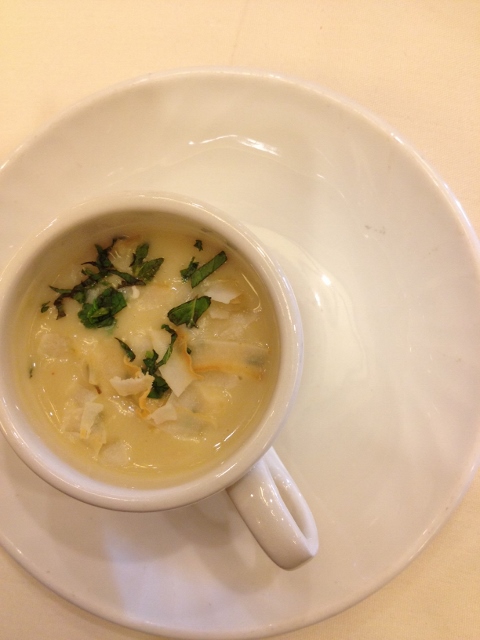
5. Food and fertility go hand in hand. Consider yourself on the cutting edge of science if you already know this, but most groups I talk to seem to find the connection startling. There’s powerful research on factors that positively and negatively affect chances of getting pregnant either through in vitro fertilization or the traditional route. The Mediterranean Diet, high fat dairy, and multivitamins seem to be helpful while trans fat, alcohol, and the traditional Western diet, not so much. So far the data on coffee is mixed. And it’s not just mom’s food choices that make a difference, either: obesity and a high saturated fat intake both negatively affect sperm concentration. So, if you’re in the market for a little one, try converting your baby daddy or baby mama to a better diet and consider it a romantic gesture.
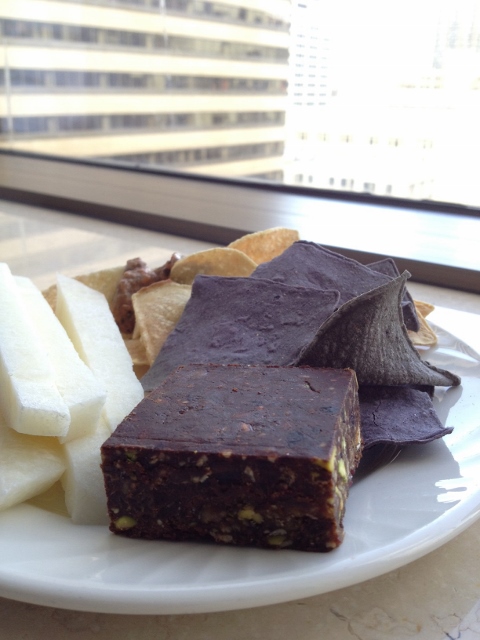
There’s so much to know. Sometimes it’s hard to take it all in and make sense of it, let alone act on it. My guess is that you’ll hear more about these innovative ideas in the months and years ahead, until it all becomes common practice. You can reassure yourself by just continuing to choose wisely every day, with slight adjustments as the science shifts. Before you know it, you’ll look back and you’ll have been living a healthy food life for decades.
What’s something you’ve learned recently in the realm of nutrition that shifted your habits?

Kristine Duncan, Registered Dietitian
I’m a Registered Dietitian, the author of Veg Girl RD, and a vegetarian who loves to eat. I’m a nutrition nerd who teaches at the University of Washington and Skagit Valley College. I also write about nutrition professionally for magazines and books. If you want to know more, check out my About page.

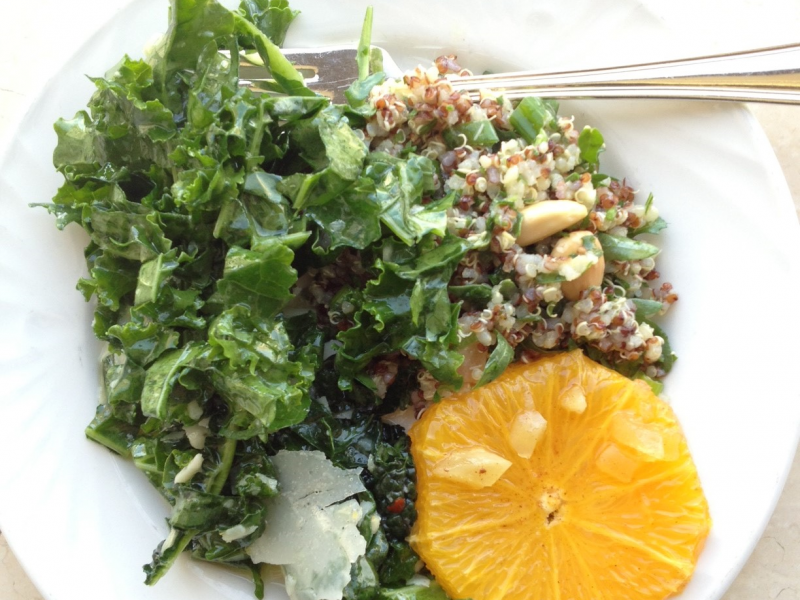
7 thoughts on “5 Lessons Learned from the Nutrition and Health Conference”
Kristine- Great tid-bits of information. And I love the words and pictures combined- makes me hungry and wiser all at the same time.
So glad you liked it, Miss Laura. Thanks for being a regular reader and supporter of the blog.
Hi Kristine! Personalized nutrition based on genetic testing is close! I don’t know if Jeff told you, but I have the gene for early heart attack, also a recent test revealed that my digestive system does not process folate into r-methylfolate. Thus what an MD precribed was for me to take more folate, didn’t help. Now I am on an r-methylfolate supplement and it’s working to reduce my triglicerides, the last “number” I needed to reduce to reduce my heart attack risk. I have learned so much since my diagnosis of IBS,and the subsequent diagnosis of SIBO. I am now on a very strict low FODMAP diet and it’s working. (It’s a pain, but it is working to reduce my symptoms.) Love ya!!!
Hello, cousin-in-law. Wow. That’s really fascinating. It’s interesting to hear how this kind of testing can help an individual with their unique situation. How cool that you got diagnoses that seem to explain things for you and offer reasonable treatment. I’ve been reading a lot about the FODMAP diet lately. Did you know there’s an app for that? 🙂 Best of luck with your dietary adventures. We should meet for lunch sometime and talk about the details – I bet you could teach me a thing or two.
Pingback: A Vegetarian in Chicago: True Food Kitchen - Veg Girl RD
You say that high fat dairy is preferable but soon after you say that a high saturated fat intake (which can come from high fat dairy) negatively affect sperm concentration. I think it may be a bit confusing and needs more explanation.
Hi Mariel. Thanks for your comment, and for bringing this to my attention. I certainly don’t want information in my posts to be confusing. And you’re right…high fat dairy is a source of saturated fat. I think the explanation for the seemingly contradictory recommendations is two-fold. First, the list of beneficial foods/nutrients/diets that includes “high fat dairy” is directed at women, while the list that includes “saturated fat” is directed at men. Perhaps there are different effects for moms and dads, considering their contribution to and participation in a successful pregnancy are different. Secondly, this area of research was still pretty new back in 2013 when I wrote the post. As with any cutting edge research focus, we get exciting new discoveries, but sometimes in the beginning the research can be conflicting and point in two different directions at the same time. As more time passes and more research is completed, perhaps we’ll get a clearer picture of saturated fat’s role in fertility.